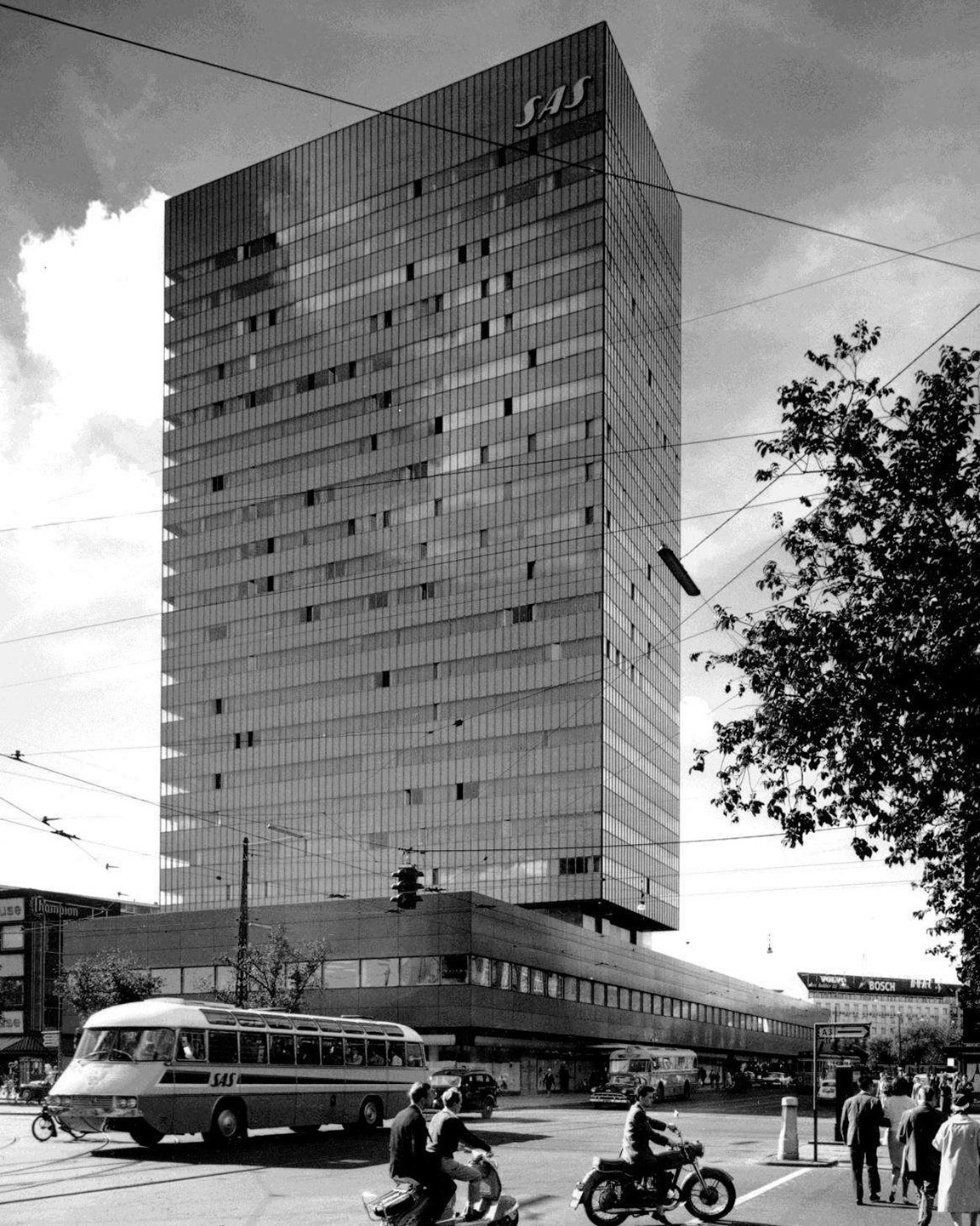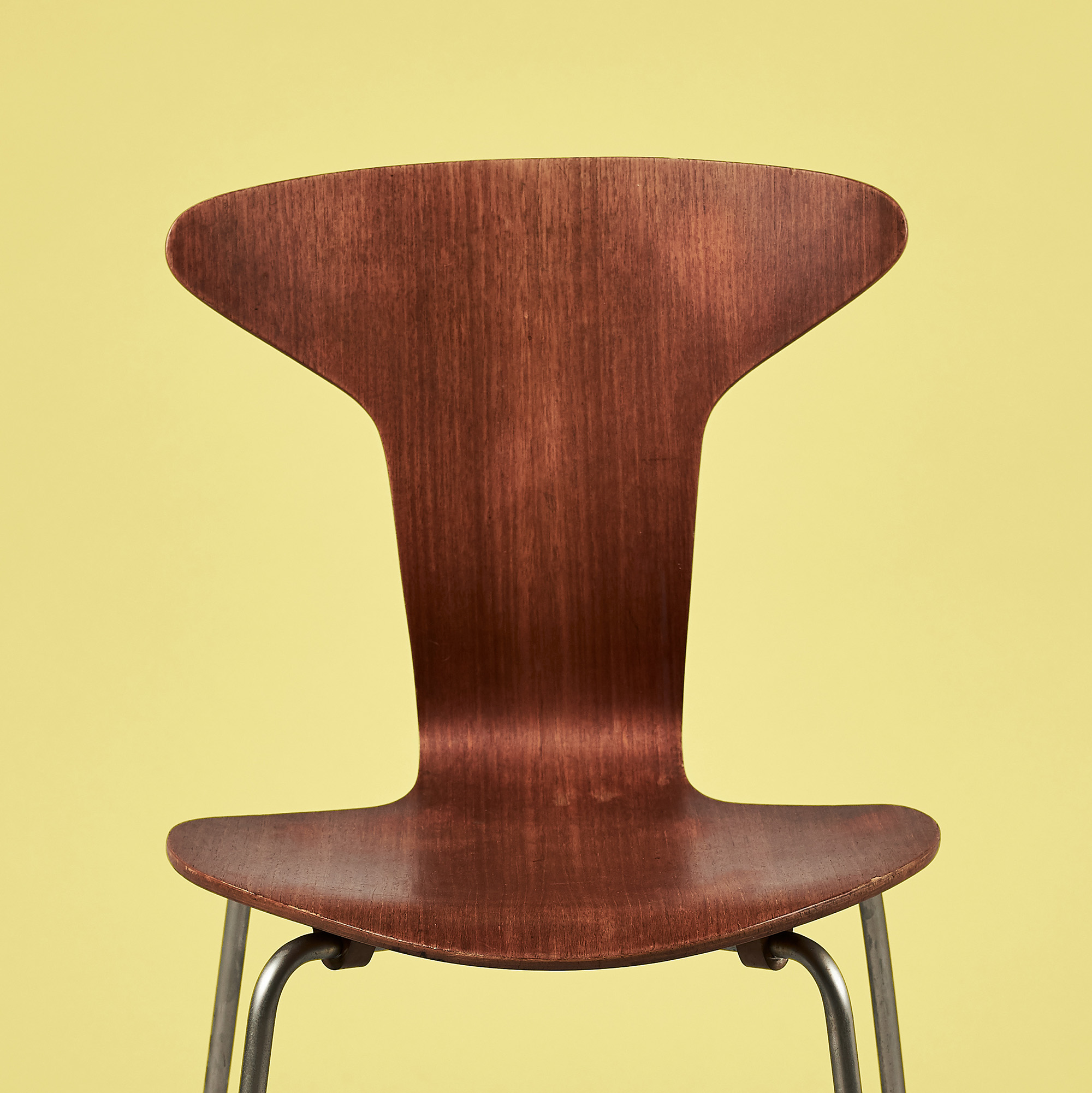The Tongue
Originally designed forMunkegaard School
Arne Jacobsen designed the small, practical Tongue chair in 1955 as part of his visionary total design of the Munkegaard School.
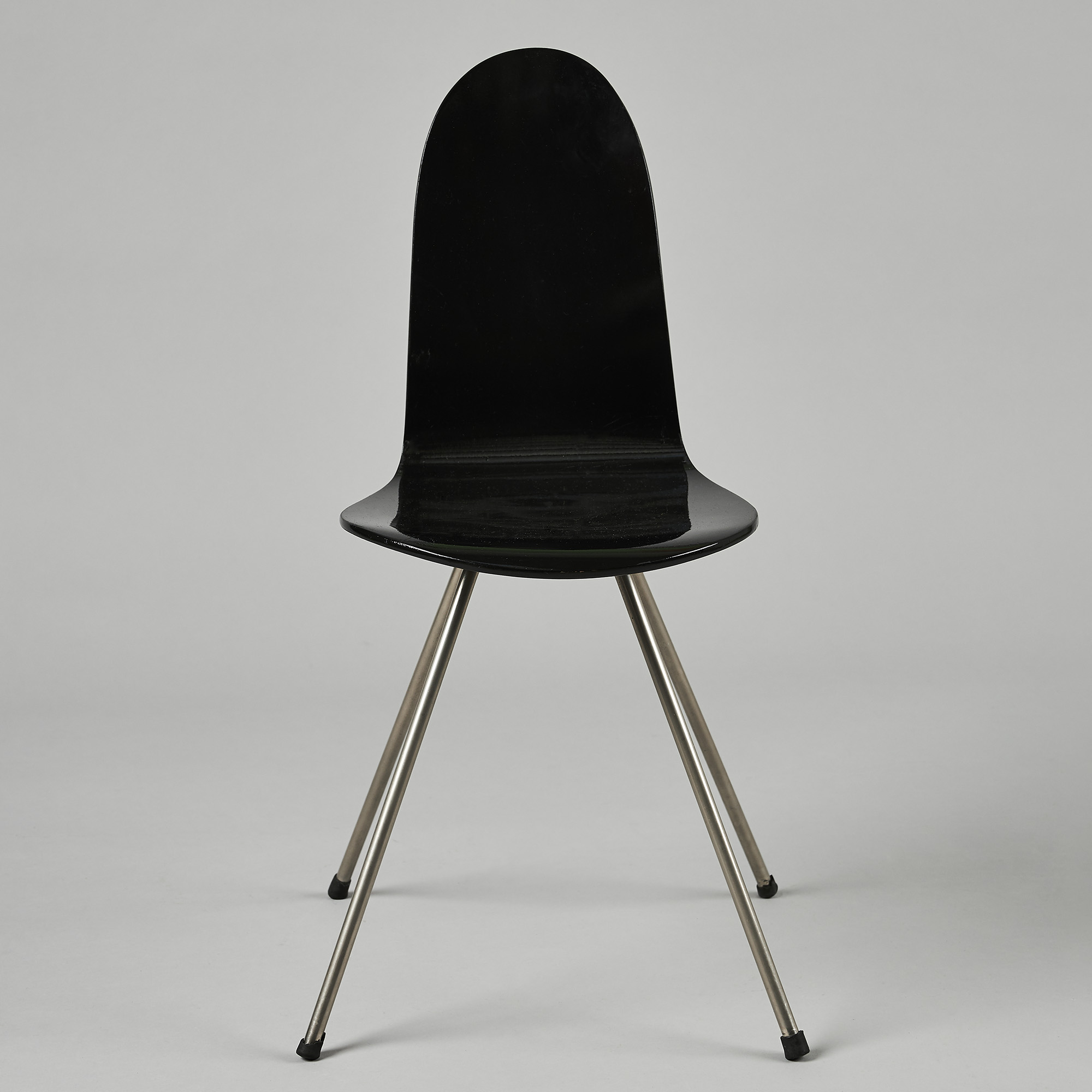
The Tongue from 1955 is Arne Jacobsen’s smallest chair and also has the most pared-down silhouette. The design was part of Arne Jacobsen’s holistic vision for the Munkegaard School in 1957, and a few years later it was included in his acclaimed design of the SAS Royal Hotel.
When the Munkegaard School opened in 1957 it was an innovative work of school architecture that gave priority to children’s well-being and their opportunities for being physically active. The new lightweight school chairs the Tongue and the Munkegaard chair were perfect for a modern school setting. For the project, the Tongue was also produced in a version with an opening milled into the back to serve as a grip and make the little chair even easier for children and adults to handle.
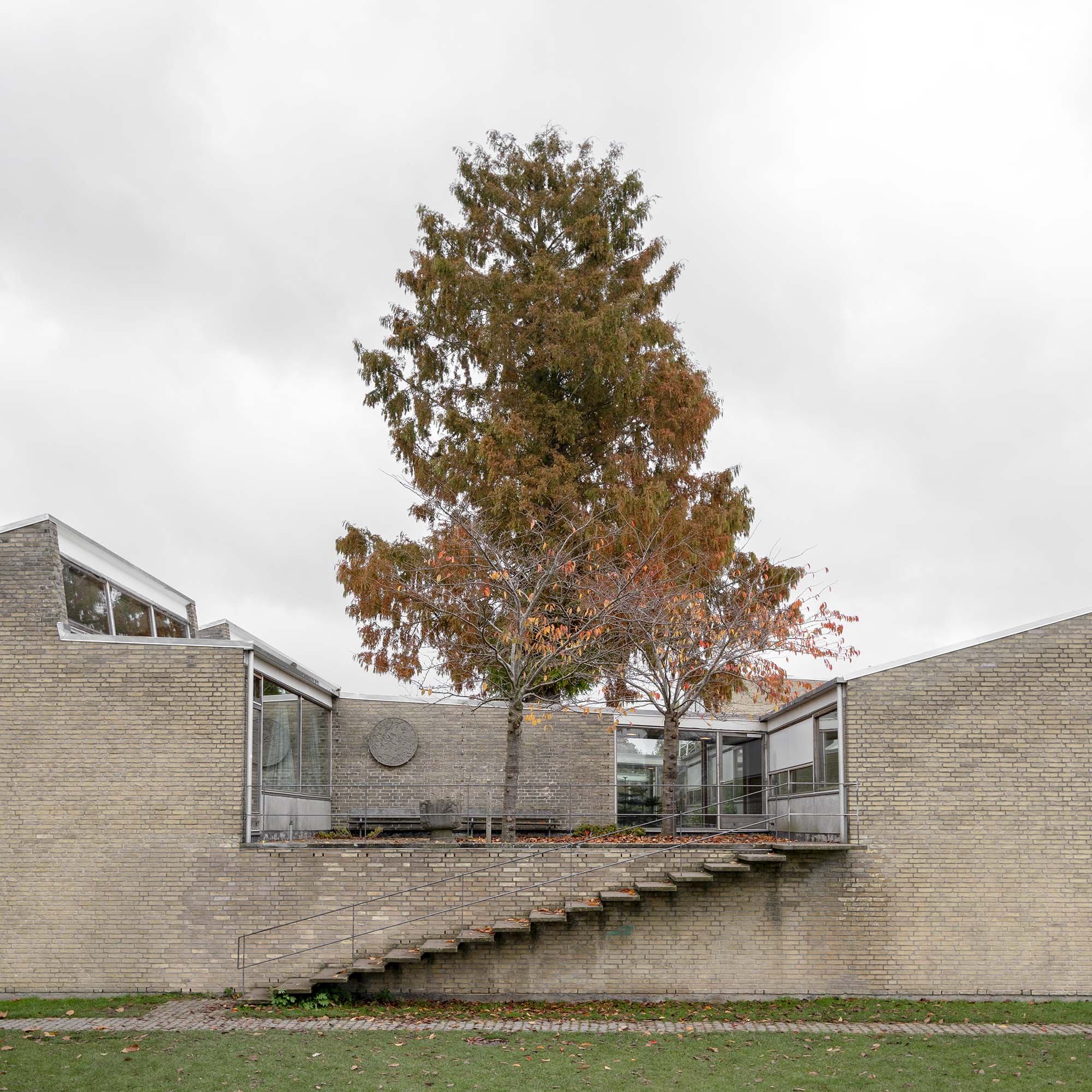
The design of the Tongue is based on two elements: a shell in moulded plywood that serves as both seat and back and a frame with legs in chromium-plated steel. Arne Jacobsen developed this simple formula in collaboration with furniture manufacturer Fritz Hansen in the early 1950s, and over the course of the decade he applied it in a number of shell chairs with different silhouettes. Unlike the other shell chairs, including the Ant, Series 7 and the Lily, the seat shell of the Tongue is not narrowed in the transition between seat and back, and the waistless silhouette appears as a single, distinct form.

In the development of the shell chairs Arne Jacobsen set himself a task that many other designers and architects were grappling with at the time: creating a strong, functional chair in a modern expression that could be mass-produced and thus be affordable to a wide audience.
In the development of the shell chairs Arne Jacobsen set himself a task that many other designers and architects were grappling with at the time: creating a strong, functional chair in a modern expression that could be mass-produced and thus be affordable to a wide audience. During this period, the American designer couple Charles (1907-1978) and Ray Eames (1912-1988) developed a chair type in fibreglass that, like Arne Jacobsen’s shell chairs, featured a seat and back shaped as a single shell that adapts to the shape of the human body. There are many similarities between the Tongue and, for example, the Eameses’ DSR chair, which was launched in 1950, not least the pared-down silhouette, which Arne Jacobsen took to the ultimate level.
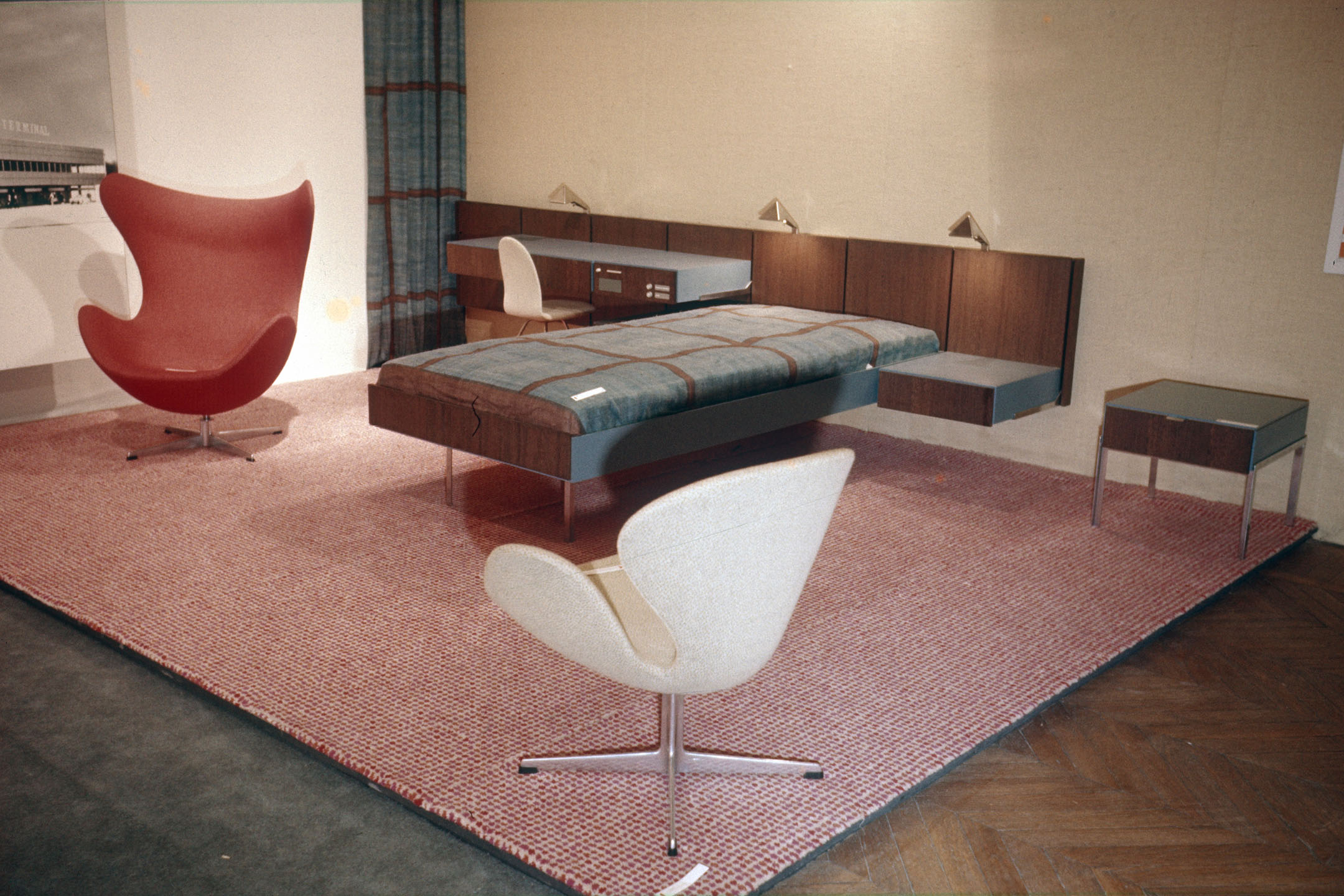
Arne Jacobsen used the Tongue in the interior design of two of his most acclaimed and innovative works of architecture: the Munkegaard School from 1957 and the SAS Royal Hotel (now Radisson Collection Royal Hotel) from 1960. In Denmark during the 1950s, the Munkegaard School was recognized as an innovative example of school architecture that accommodated contemporary educational trends and created optimal physical settings for the pupils. The single-storey project provided a bright, airy environment, and each classroom had access to a separate atrium, which brought and calm and intimate atmosphere to what is in fact a rather large school. The small, practical Tongue chair was part of Arne Jacobsen’s total design of the school, which included custom-designed furniture, fabrics and other interior elements. In the atriums, the design included casts of classic sculptures and plantings arranged in spectacular patterns.
The following year, in 1958, the Tongue was included in the exhibition Formes Scandinaves (Scandinavian Forms) in Paris, where Arne Jacobsen presented the furniture he had designed for the rooms at the SAS Royal Hotel. While the hotel exterior adhered to the rectilinear minimalist style of international modernism, Arne Jacobsen’s interior design of the hotel was an exuberant display of organic forms, materials and details. The Tongue was not actually used in the hotel rooms but was produced as a barstool with leather upholstery, mounted on a column base, that was developed especially for one of the hotel bars. Here it stood ready to welcome guests when the hotel opened in 1960.
Sources: Arne Jacobsen Design Archives. / Arne Jacobsen’s scrapbooks. The Royal Library – Danish Art Library. / Stenum Poulsen, K., Skaarup Larsen, A., & Staunsager, S. (2020). Arne Jacobsen – Designing Denmark. Kolding: Trapholt. / Thau, C., & Vindum, K. (1998). Arne Jacobsen. Copenhagen: Danish Architectural Press.
